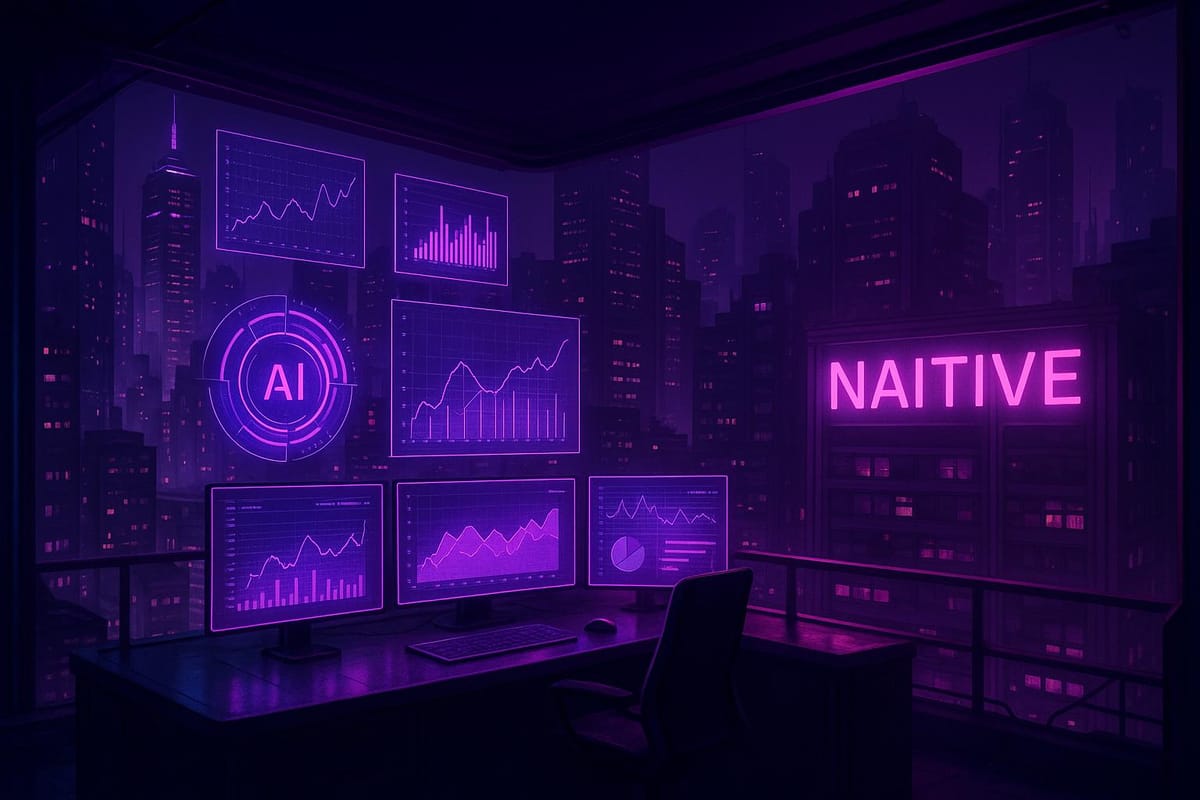How AI-Driven Insights Break Test Automation Blind Spots
Discover how AI-driven insights address automation blind spots, optimize testing, and enhance quality assurance strategies.

How AI-Driven Insights Break Test Automation Blind Spots: A Comprehensive Guide for Business Leaders and AI Enthusiasts
Test automation has become an indispensable cornerstone in modern software development, allowing organizations to streamline quality assurance processes and accelerate delivery timelines. However, even with robust tools, inherent challenges such as test flakiness, critical failure blindness, and data instability continue to plague teams. Enter the transformative potential of AI-driven insights, which promise to revolutionize how businesses approach test automation by addressing these blind spots.
This article explores how AI can empower quality assurance (QA) teams, break through common test automation challenges, and provide actionable strategies for business leaders and AI enthusiasts alike. Based on insights shared by Sardak Gupta, Senior Quality Engineer at Walmart, and an illustrative live demo, this guide will walk you through the powerful capabilities of AI-powered automation and its real-world implications.
The Persistent Challenges in Test Automation
Despite being a key driver of efficiency, test automation is not without its hurdles. Traditional tools often fall short when faced with:
- Test Flakiness: Intermittent test failures due to unstable locators or environmental factors.
- Data Challenges: Issues with generating, maintaining, or enhancing test datasets.
- Onboarding Complexities: New team members often face steep learning curves when adapting to established frameworks.
- Critical Failure Blindness: Difficulty in identifying high-priority failures amidst the noise of flaky or redundant test cases.
- Maintenance Burden: Managing test scripts can become resource-intensive, especially as applications evolve.
These pain points often lead to wasted resources, delayed releases, and reduced confidence in test coverage.
The AI-Powered Solution: Smarter, Resilient Testing
By leveraging AI-driven automation, organizations can overcome these barriers and enhance their testing processes. Let’s explore the key benefits and mechanisms of AI-powered testing:
1. Pattern Recognition and Analysis
AI engines can analyze historical test data to detect patterns and predict failure trends. This allows QA teams to proactively address chronic issues and avoid recurring failures.
2. Dynamic Optimization
AI can dynamically optimize test executions by prioritizing stable test cases and retrying flaky ones with adjusted parameters. For instance, if a locator fails during runtime, AI can self-heal the locator and reattempt the test.
3. Intelligent Test Classification
AI systems categorize test cases into stable, flaky, or critical, ensuring teams focus their efforts where it matters most. This intelligent classification improves defect detection rates and reduces the number of redundant test runs.
4. Test Data Management
AI simplifies the generation and maintenance of test data through mocking, golden dataset creation, and dynamic updates. These capabilities ensure test data remains reliable, reusable, and scalable.
5. Self-Healing Capabilities
AI-powered test frameworks can detect and automatically resolve issues such as broken locators or changes in application structure, ensuring minimal disruption to test runs.
The AI-Powered Test Architecture
To achieve these benefits, AI-powered test automation relies on a robust architecture comprising the following components:
- AI Engine: Analyzes test data, predicts failure patterns, and provides actionable insights.
- Test Selector: Prioritizes test cases based on their stability and relevance.
- Execution Optimizer: Streamlines test executions by running them in parallel or sequentially for maximum efficiency.
- Result Analyzer: Evaluates test outcomes, categorizes failures, and identifies root causes.
For example, tools like BrowserStack use AI dashboards to provide detailed metrics on test stability, flakiness, and failure categorizations. Business leaders can leverage these insights to refine their testing strategies and improve overall product quality.
Real-World Impact: Before vs. After AI Implementation
The transformative power of AI-driven test automation is evident when comparing pre- and post-AI implementation scenarios:
| Metric | Before AI Implementation | After AI Implementation |
|---|---|---|
| Regression Test Suite Size | 1,000+ test cases | 60 prioritized test cases |
| Test Execution Time | 2 hours | 1 hour (50% reduction) |
| Resource Utilization | Many stable tests ran redundantly | Optimized to focus on flaky tests |
| Defect Detection | Missed critical failures | Higher defect detection rates |
This shift not only improves efficiency but also frees up resources for exploratory testing and innovation.
The Next Frontier: Agentic AI and MCP Protocols
Generative AI vs. Agentic AI
While generative AI excels at producing content and detecting patterns, it lacks the capability to interact with real-world tools autonomously. Agentic AI bridges this gap by combining goal-oriented actions, strategic planning, and autonomous execution.
What is the MCP Protocol?
The Model Context Protocol (MCP), introduced by Anthropic, acts as a standardized connector between large language models (LLMs) and external tools. Think of MCP as the USB-C of AI, providing a universal interface for integrating AI systems with diverse data sources and services.
For example, an LLM enhanced with MCP can interact with databases, APIs, and file systems to perform complex tasks such as analyzing customer feedback or automating test scripts. By unifying these interactions through a single protocol, MCP reduces integration complexities and enhances efficiency.
Practical Demonstration: AI-Driven Test Execution
In a live demo, Sardak Gupta showcased how to leverage MCP-enhanced AI for browser automation. Using a tool called "Cursor" as the MCP client and Playwright as the server, the demo illustrated the following steps:
- Launching the Website: The AI system navigated to the Goibibo website and bypassed the login screen by reloading the page.
- Flight Search: It populated search fields for departure and destination, selected a flight based on predefined criteria (e.g., price and airline), and clicked on the corresponding "Book Now" button.
- Validation: The AI validated that the correct URL endpoint was loaded and generated an HTML report summarizing the test execution.
- Reporting: The generated report included a detailed step-by-step log, pass/fail statuses, and visual charts for easy analysis.
This demo highlighted the seamless integration of AI with tools, showcasing its ability to automate complex workflows without manual intervention.
Key Takeaways
- AI-driven automation addresses common test automation challenges, such as test flakiness, onboarding complexities, and maintenance burdens.
- Dynamic optimization and intelligent classification enable teams to prioritize high-impact test cases and minimize resource wastage.
- MCP Protocols simplify AI integration with external tools, acting as a universal connector for diverse applications.
- Real-world benefits of AI include reduced test execution time, higher defect detection rates, and enhanced resource efficiency.
- Agentic AI expands the capabilities of generative AI, enabling autonomous decision-making and complex task execution.
- Self-healing locators and test data generation are game-changers for maintaining robust and scalable test suites.
- Tools like Cursor and Playwright, powered by MCP, demonstrate the practical application of AI in browser automation.
Conclusion
AI is not just a tool - it’s a transformative force that empowers QA teams to work smarter, faster, and more effectively. By addressing test automation blind spots, AI-driven insights enable organizations to achieve higher quality standards, reduce time-to-market, and foster innovation. Whether you’re a business leader seeking strategic improvements or an AI enthusiast exploring the latest in technology, the potential of AI in test automation is undeniable.
The key to unlocking AI's full potential lies in understanding its capabilities, integrating it effectively into your workflows, and leveraging tools like MCP to simplify complex interactions. The future of test automation is here, and it’s powered by AI.
Source: "[Breakpoint 2025] Breaking Automation Blind Spots with AI-Driven Insights" - BrowserStack, YouTube, Aug 5, 2025 - https://www.youtube.com/watch?v=ZYpLZzhcAjA




